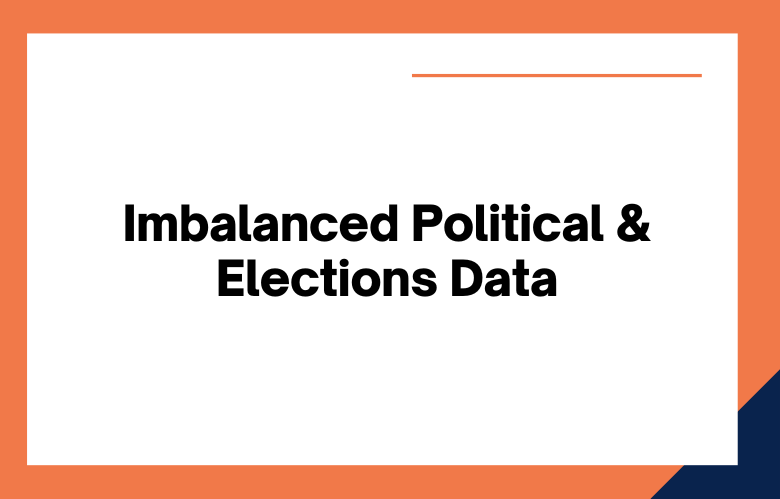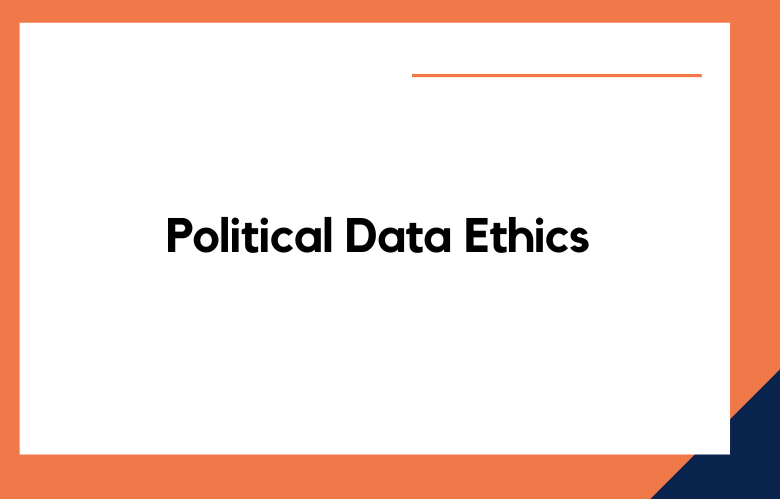With the ever-changing political and election landscape, keeping up with all the data collected, analyzed, and reported cannot be easy. It’s no surprise that many organizations struggle with handling imbalanced political and election data. However, some fundamental techniques can help you manage imbalanced data more effectively. Let’s take a closer look at these techniques.
Political and election data is one of the most important sources of information that can be used to make decisions. However, due to its imbalanced nature, it cannot be easy to manage. In this post, we’ll look at a few techniques to help you handle imbalanced political and election data so you can make more informed decisions.
Strategies for Dealing with Imbalanced Political & Election Data
The first technique for dealing with imbalanced political & election data is to use oversampling methods. This method involves duplicating specific data points to balance their representation in the dataset.
For example, if you have a dataset consisting of 60% males and 40% females, you could use oversampling to duplicate female data points until the proportions become 50/50. It upsamples the less represented class to ensure it has equal representation compared to other courses within the dataset.
Another technique for handling imbalanced political & election data is undersampling—the opposite of oversampling. This technique involves removing specific data points from the dataset to ensure they are not overrepresented within the dataset.
For example, if your dataset consists of 70% males and 30% females, you could use undersampling to remove male data points until the proportions become 50/50. Again, this will ensure that all classes are equally represented within your dataset.
Another technique for handling imbalanced political & election data is weighting samples based on their relevance or importance relative to other models in the dataset. For example, suppose certain areas have more voting power than others due to population size or other factors.
Those areas can be assigned weighted values, so they count more toward overall results than others. This allows organizations better to understand voting patterns across different regions and demographics while ensuring that essential areas or groups of people are noticed and represented in results or analysis due to imbalances in their datasets.
Data Balancing Techniques
To handle imbalanced data properly, a few balancing techniques must be utilized. These include oversampling, undersampling, SMOTE (Synthetic Minority Over-sampling Technique), and random sampling.
Oversampling involves increasing the number of instances from the minority class to match the number of cases from the majority class. The result is that each class will have an equal representation in the dataset. It can be done by randomly selecting instances from the minority class until their frequency is balanced with that of the majority class.
Undersampling involves reducing the number of instances from the majority class to match the number of cases from the minority class. It can also be done by randomly selecting samples from the majority class until the frequency is balanced with that of the minority class.
SMOTE works by creating synthetic examples of minority classes to balance out their representation in a dataset; this is done by combining features from existing models in a dataset and generating new ones similar to them. Random sampling involves selecting random samples from both classes until they are balanced with each other’s frequency in a dataset.
All these techniques help make data more representative by ensuring that all classes are equally represented in a dataset; this makes it easier for analysts to assess results accurately without bias or favoritism towards particular groups or classes within a given dataset.
Data Augmentation
One technique for handling imbalanced political and election data is through data augmentation. It involves oversampling minority classes or undersampling majority classes to bring them into balance with each other. It can be done manually or automatically using algorithms that identify the right proportion of samples needed to achieve a balanced dataset.
Another way to augment your data is by adding synthetic pieces generated from existing minority classes. This helps reduce bias in machine learning models by providing more information about the minority class.
Resampling Techniques
Another technique for handling imbalanced political and election data is resampling techniques such as random undersampling, SMOTE (Synthetic Minority Oversampling Technique), and ADASYN (Adaptive Synthetic Sampling). These techniques help balance out the dataset by either reducing the size of the majority class or increasing the size of the minority class so that both types are represented equally in the dataset.
Ensemble Learning
Ensemble learning is another powerful technique to handle imbalanced political and election data. In ensemble learning, multiple models are combined to create a more robust model than any one model could produce. This technique helps increase accuracy by combining predictions from different models. It can be used as input for a final predictive model that yields better results than any of its components alone.
Balancing the Political & Elections Data Landscape
The first technique for handling imbalanced political and election data is oversampling. Oversampling involves taking a subset of the data and repeating it multiple times to balance the data set. When you split your data into training and testing sets, the training set will contain more instances of minority classes than the original dataset since these minority classes have been artificially increased by oversampling.
The downside of this technique is that it increases the likelihood of overfitting and may lead to inaccurate results when tested on new data.
Another technique for dealing with imbalanced political & election data is undersampling. Unlike oversampling, undersampling involves taking a subset of the majority class and reducing it to balance the dataset.
It helps minimize overfitting by ensuring only a few examples from one course in the training set. However, this technique should be used sparingly as it can lead to a loss of information if too much data is removed from any class.
Finally, an additional way to handle imbalanced political & election data is using ensemble methods such as boosting or bagging algorithms. These algorithms combine multiple models to create a single model with better predictive accuracy than each.
Additionally, boosting algorithms are particularly well-suited for dealing with imbalanced datasets since they assign more weight to minority classes, which helps them gain a better representation of the final results produced by the algorithm.
Conclusion
there are several strategies that organizations can utilize when dealing with imbalanced political & election datasets, including oversampling methods, undersampling methods, and weighting samples based on their relevance or importance relative to other models in the dataset.
By utilizing these strategies correctly, organizations can ensure they have an accurate picture of voter opinions before making significant decisions regarding upcoming elections or campaigns.
These techniques help ensure no group is overly represented or underrepresented within any given set of results, which promotes fairness during electoral processes!
Imbalanced political and election data can be challenging to manage, but your data analysis efforts can yield more accurate results with the proper techniques.
Data augmentation, resampling techniques, and ensemble learning are all effective methods for addressing this issue so that you get more reliable insights from your data analysis projects.
With these tips, you will have no problem managing imbalanced political and election data!
The above techniques are must-haves for data scientists working with political & election data.
Preparing, analyzing, and visualizing such data is complex and requires significant expertise.
However, these steps will help ensure your analysis is as accurate as possible. If you need assistance with your political & election data, we encourage you to contact our team of experts.
We offer political & elections data strategy consulting services to help you make the most of your data. Contact us today to learn how we can help you win the election!
Call: +91 9848321284
Email: [email protected]











